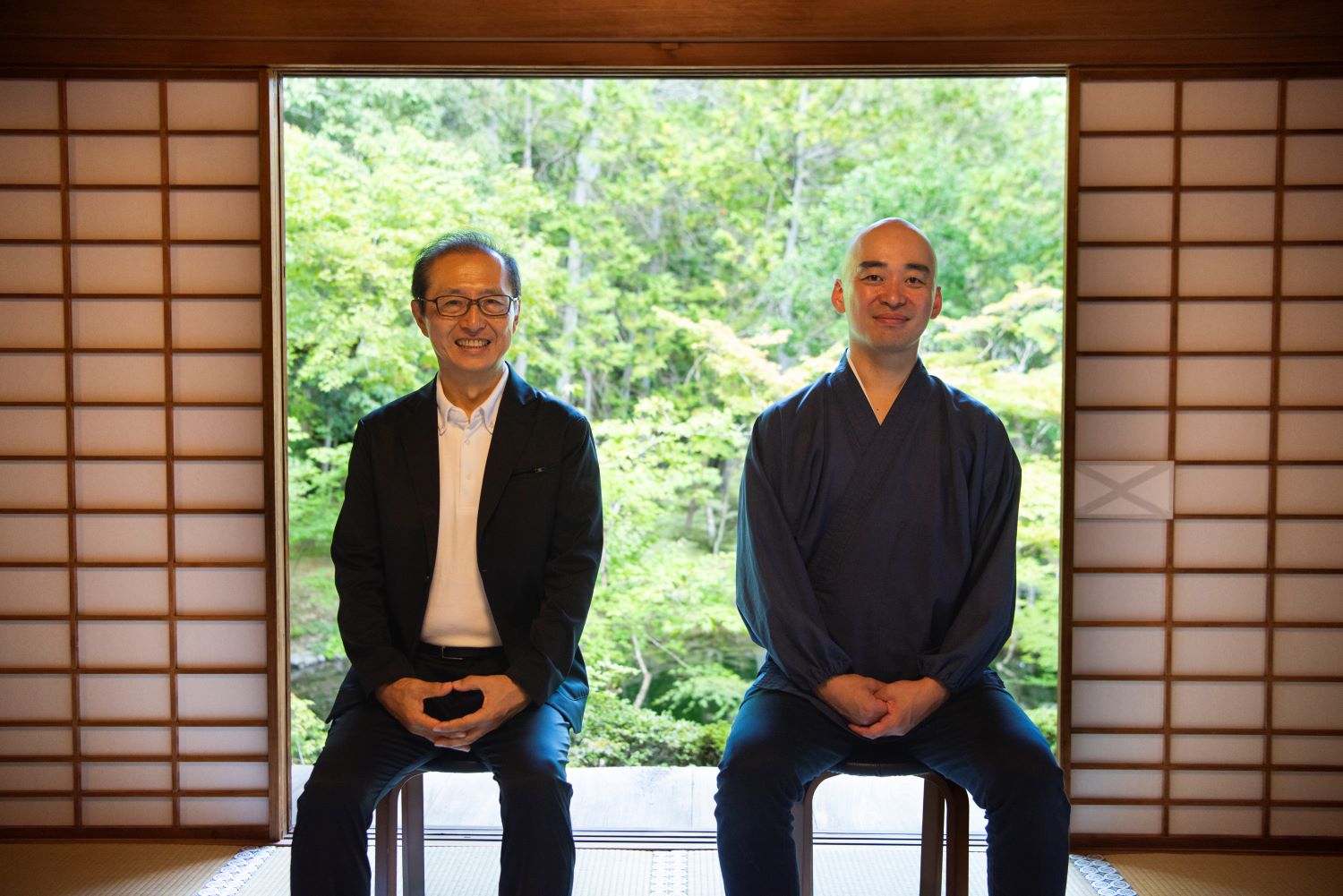2024.5.10
Five Seasons of Scenic Beauty Chapter 2
Nakata Akira / Photographer
In most of the world there are four seasons, but here at Saihoji Temple, we count the rainy season as a separate season, so we have five seasons. Over the course of over one hundred visits, photographer Nakata Akira has captured the beauty of these five seasons at Saihoji. We hope you will enjoy the distinctively “Saihoji” moments immortalized in his work.
Green Moss

@Nakata Akira
It was about 15 years ago that I had the opportunity to photograph the garden of Saihoji Temple for the first time. I can still clearly recall the scene. It was in the middle of the rainy season in June, and I was there for about two hours in the morning.
At dawn that day, I awoke to the sound of heavy rain. Under a gloomy sky, I drove my car toward western Kyoto. By the time I arrived at the Shumyo Gate of Saihoji Temple, the rain had eased, and I stepped into the garden feeling as if I were heading into another world. The moss garden that appeared before me in that moment was fresh and moist. I was certain that all I had to do was touch it, and the water would well up between my fingers. I still vividly remember the vibrant colors of the moss.
In recent years, I have had many opportunities to visit the garden throughout all five seasons (spring, rainy season, summer, fall and winter) for the publication of my photo book SAIHOJI SHIN JYUKKYO. On several occasions, the moss here has shown me the true wonder of life. Moss is said to be the first plant that was able to survive on land some 470 million years ago, long before the birth of our ancestors, the anthropoid apes, about 7 million years ago. It absorbs water not from its roots but from its entire body, and nourishes itself through photosynthesis.
Although the Saihoji garden was created by high priest and master gardener Muso Kokushi in the 14th century, it was devastated by natural disasters and wars several times. And it was only around 300 years ago that it began to be covered with moss. Since then, the caretakers of the garden have ceased resisting nature, choosing instead to help the mosses grow by sweeping away dead leaves with bamboo brooms. As a result, the garden today is covered with more than 120 varieties of moss, preserving the beautiful wabi-sabi* atmosphere.
*Wabi-sabi is a concept within Japanese esthetics that seeks to find beauty in transience and imperfection.
Reference: “Listening to the Moss” written by Yoshitaka Oishi (Saihokai Association)
Nakata Akira
Born 1951 in Kyoto.
A member of the Japan Professional Photographers Society (J.P.S). He is a famous photographer of landscapes, gardens and festivals on the theme of “Kyoto culture”, and has published several books.
His main publications are
“SAIHOJI SHIN JYUKKYO” (Saihokai Association),
“Going through the Tale of Genji”, “Kyoto’s Festival Calendar” (Shogakukan),
“KYOTO IMPERIAL PALACE, OMIYA / SENTO IMPERIAL PALACE”,
“KATSURA IMPERIAL VILLA / SHUGAKUIN IMPERIAL VILLA”,
“Kyoto Gion Festival”,
“Kyo Shun Kan” (Kyoto Shimbun Publishing Center),“Japanese Gardens: Kyoto” (PIE INTERNATIONAL), and more
* Unauthorized quotation or reproduction of the text and photographs in this article is strictly prohibited.






